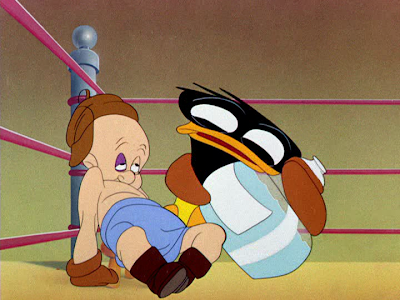
No doubt you’ll read on the internet that today is Betty Boop’s birthday, that the first Boop cartoon, “Dizzy Dishes,” was released on this date in 1930.
It may very well have been. But it also appeared in theatres before that. At the right, you can see an ad from the
Decatur Herald of July 27, 1930. “Dizzy Dishes” was already appearing. And Decatur, Illinois wasn’t the only place the cartoon was playing before the alleged release date.
This wasn’t an isolated case. Over at the old Golden Age Cartoon Forum, research showed a number of the Warner Bros. cartoons the same year were in theatres before their formal release date. And, on a whim, I recently hunted down a 1946 Tex Avery cartoon in theatre ads and found it playing before it was supposed to be on the big screen.
One has to remember we’re talking about a different era than today. The first concern of a movie company today, after releasing a film, is the weekend box office take as of the following Monday, and how much more money their movie made than the competitor’s—in the same time span. So movies today can’t have an approximate opening. They have to have a definite date to be able to go head-to-head.
Years ago, shorts were thrown in as part of the deal to get a feature. There was no financial competition among them so there was no real need for them to be released on an exact date. Joe Adamson, the author of
Groucho, Harpo, Chico and Sometimes Zeppo, explained the situation in a Facebook conversation (his book showed up in Philadelphia ahead of the release date):
The studio had to make a release negative, make many prints, and supply the exchange w/them ahead of the release date -- This involves labs and shippers -- but once the exchange had them, any theater that wanted or needed a short could book it, regardless of the official release date --
Like the publication date for GROUCHOHARPOCHICO, the studio doubtless set a date they were sure they could meet, then targeted an earlier date to make sure they weren't caught short, sometimes ending up with films arriving well ahead of time -- The release date, then, is the earliest date they can guarantee the picture being available to any given theater -- Make sense??
Sometimes these orders were apparently made by the chain (if the theater was part of one), and assignments were apparently done very carelessly -- When I was living in State College, Pa., the same theater showed the same print of an awful Lantz cartoon called GOPHER BROKE with every film I saw there, even DUMBO! I finally complained to the mgr., and he said the chain probably just ordered "a cartoon" and the exchange probably slapped whatever cartoon was there into the pkg. w/o giving it any thot -In other words, a release date for a Golden Age cartoon, even in reputable trade publications of the day, is a best-guess scenario.
So let’s get back to Betty Boop, the Betty before she became a straight woman to a dog and a grandfather. Betty fit in well with the early Fleischer atmosphere, where things morphed into other things or became temporarily human. And of course, there was the sex. Like in “Betty in Blunderland” (1933). She enacts the part of Alice in Wonderland as she walks through the looking glass and falls down a shaft. Yes, her dress flies up.

She passes some women’s unmentionables.

Then uses a convenient clothespin to keep her dress down.

She falls past a kitchen setting and grabs a jar of jam.


The jam turns into the head of Ed Wynn. Betty is so shocked, the clothespin flies off her dress.

A nude statue (with a bellybutton but not anatomically correct) is conveniently in the path and the jar of Ed Wynn rests there as Betty falls past it and down to the pavement below. The recent hit “Did You Ever See a Dream Walking” plays in the background through the scene.
Doc Crandall and Tom Johnson are the credited animators.
Olive Films has recently licensed some of the Betty Boop cartoons, though apparently not ones in the public domain like “Betty in Blunderland.” The assumption is the company will release them. It’d be a shame if only part of Betty’s body of work was restored and available for fans to snap up—especially if it’s only the later, dull cartoons—but it’d be better than nothing.
For those of you who want to celebrate Betty, birthday or not, this is from a TV print of her first cartoon.

























































